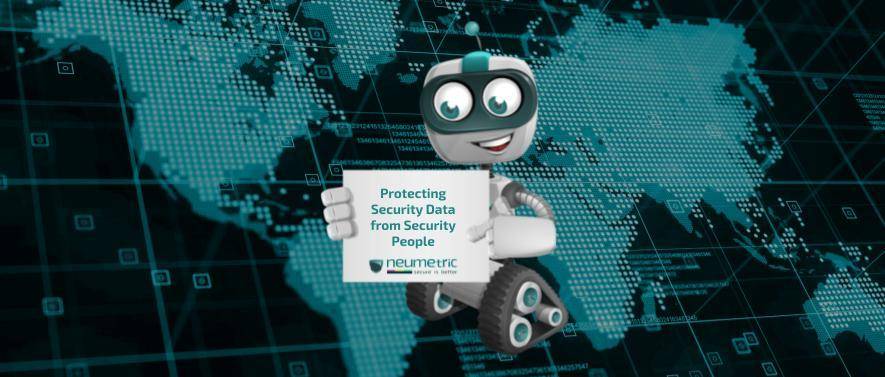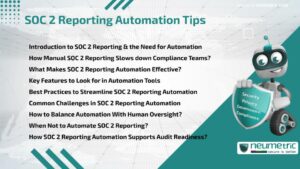Talking of modern security tools that scan millions of devices every day and gather intelligence on billions of events, these devices have grown increasingly capable. While the whole idea is to bring more information together for threat intelligence, it is equally important to understand how all this data will be secured.
Table of Contents
ToggleWhat is Information Security?
Information security is the practice of protecting data and information from unauthorised access, use, disclosure, disruption, modification, or destruction. In today’s digital age, information is a critical asset for businesses and individuals, and protecting it has become an essential aspect of ensuring privacy, confidentiality, and integrity. Information security aims to ensure that information is available, confidential, and trustworthy, and that it is protected from cyber-attacks, data breaches, and other types of security incidents.
Information security is a broad field that covers a range of topics, including cryptography, network security, application security, physical security, and operational security. Cryptography is the practice of converting information into a code or cipher to protect it from unauthorised access. Network security is the practice of securing the communications infrastructure, including servers, routers, and other network devices. Application security focuses on securing software applications and web applications from potential vulnerabilities. Physical security is the practice of securing the physical environment, including buildings, offices, and data centres. Operational security is the practice of managing security processes and procedures to prevent security incidents from occurring.
The importance of information security cannot be overstated. In today’s digital world, Organisations and individuals rely heavily on technology to store, manage, and transfer data. The proliferation of mobile devices, cloud computing, and social media has made it easier for cybercriminals to access and exploit sensitive information. Cyberattacks are becoming more sophisticated, and Organisations must take a proactive approach to protecting their Information Assets.
One of the primary objectives of information security is to maintain the confidentiality of data. Confidentiality ensures that sensitive information is not disclosed to unauthorised parties. Information can be classified into different levels of confidentiality, and access to information should be restricted based on its classification. For example, classified government information should only be accessible to authorised personnel with the appropriate clearance level. Confidential information in the corporate world can include customer data, financial information, and intellectual property.
Another critical objective of information security is to maintain the integrity of data. Integrity ensures that information is accurate and trustworthy. Data integrity is essential in maintaining the quality and reliability of information. If data is corrupted, modified, or deleted, it can lead to significant problems for Organisations, such as financial losses or legal liabilities. Data integrity can be maintained through the use of access controls, data validation checks, and audit trails.
Availability is another essential objective of information security. Availability ensures that data and information are accessible to authorised users when needed. Cyberattacks such as Denial-of-Service [DoS] attacks or ransomware can disrupt access to information and affect an Organisation’s ability to operate. Ensuring the availability of data requires implementing robust backup and disaster recovery plans.
In addition to maintaining confidentiality, integrity, and availability, information security also aims to maintain authenticity and non-repudiation. Authenticity ensures that data is genuine and has not been altered or falsified. Non-repudiation ensures that a sender cannot deny sending a message, and a receiver cannot deny receiving a message. These two objectives are particularly important in digital signatures, which are used to verify the authenticity and integrity of digital documents.
Information security risks can come from internal and external sources. Internal threats can come from employees who have access to sensitive information but misuse it. External threats can come from cybercriminals who use various techniques to gain access to an Organisation’s network or systems. Common external threats include phishing attacks, malware, and social engineering. Information security risks can also arise from third-party vendors, contractors, or partners who have access to an Organisation’s data.
To mitigate information security risks, Organisations must implement a comprehensive security program that includes policies, procedures, and technologies. The security program should cover all aspects of information security, including data classification, access controls, encryption, network security, application security, physical security, and incident response.
When Data keeps streaming in
Organisations never delete the data, they are always adding more, with more devices and applications. They collect, store, and access information from many locations. Many Organisations lack control over employee-owned devices, which may be used to access key data. This makes malicious insiders a real threat to companies, especially those who hold vast amounts of sensitive data. Trend Micro and Twitter are two examples of a long and growing list of Organisations that have abused legitimate access to enterprise systems and information.
With a lot of sensitive data streaming in, it is crucial that security companies re-evaluate how they store the data and who can access it. For some Organisations, this demands a closer look at the IT department, where too much access to data is provided to IT pros, who develop and test new applications.
Why do Data Breaches happen?
This might be risky in many ways. When you provide access to coders and developers to production data, you allow them to see sensitive information and bring the data into potentially risky situations. Sharing data inappropriately with unauthorised entities creates a vulnerability, but this is not the only consequence.
This violates many growing data protection laws and regulations, according to which companies can only use personal data for the purposes for which it is collected. Using data to test new applications and updates is usually not the only purpose. Sharing a single user ID and password for each system is still a pretty common practice among IT and development teams. The problem that arises is, if something happens to the data, there is no way to find out who was behind the malicious activity.
What are the major information security threats?
Information security threats are constantly evolving and can come from a variety of sources, including cybercriminals, state-sponsored actors, and even trusted insiders. These threats can result in data breaches, financial losses, reputation damage, and legal liabilities. Let us look at some of the major information security threats that Organisations and individuals face today.
Phishing Attacks: Phishing attacks are one of the most common forms of cyber-attacks and involve the use of social engineering to trick individuals into providing sensitive information, such as passwords or credit card numbers. Phishing attacks are typically carried out through email, social media, or instant messaging, and often involve the use of fake login pages or attachments containing malware.
To prevent phishing attacks, individuals and Organisations should be vigilant about the emails they receive, particularly those that ask for personal information or urge immediate action. It’s also essential to verify the authenticity of links and attachments before clicking on them.
Malware: Malware, short for malicious software, is a type of software designed to damage, disrupt, or gain unauthorised access to a computer system. Malware can take many forms, including viruses, worms, trojans, and ransomware. Malware can be spread through emails, websites, or infected software.
To protect against malware, individuals and Organisations should ensure that they have up-to-date anti-virus and anti-malware software installed on their computers and networks. Regular software updates can also help prevent vulnerabilities that malware can exploit.
Ransomware: It is a type of malware that encrypts a victim’s data, rendering it inaccessible until a ransom is paid. Ransomware attacks have become increasingly common in recent years, and cybercriminals often demand payment in cryptocurrencies, making it difficult to trace.
To protect against ransomware, individuals and Organisations should ensure they have regular backups of their data, as well as strong access controls and network security. Cybersecurity training can also help individuals recognize and respond to potential ransomware attacks.
Insider Threats: They come from within an Organisation and can include employees, contractors, or vendors with access to sensitive data. Insider threats can be accidental or intentional and can result from negligence, malice, or a lack of training.
To prevent insider threats, Organisations should implement access controls, monitor access logs, and provide regular cybersecurity training for employees. Employee background checks and periodic reviews of employee access rights can also help identify potential insider threats.
Advanced Persistent Threats [APTs]: These are long-term, targeted attacks carried out by state-sponsored actors or other skilled attackers. APTs involve multiple stages, including reconnaissance, initial access, persistence, and exfiltration, and can be difficult to detect and remediate.
To protect against APTs, Organisations should implement layered security controls, including firewalls, intrusion detection systems, and Security Information and Event Management [SIEM] tools. Regular vulnerability assessments and penetration testing can also help identify and mitigate potential APT risks.
Distributed Denial of Service [DDoS] Attacks: These attacks involve flooding a victim’s network or servers with traffic, rendering them inaccessible. DDoS attacks can be carried out using botnets, which are networks of infected devices controlled by a single attacker.
To prevent DDoS attacks, Organisations should implement network security controls, including firewalls and intrusion prevention systems, as well as cloud-based DDoS mitigation services. Regular monitoring of network traffic can also help identify and respond to potential DDoS attacks.
Protecting Data from Insiders
With multiple people using the same user ID, there is no chance of keeping accountability for those using that ID. This makes it hard to ascertain if someone used that ID to steal key information. Failing to implement controls can make it easier for an insider to get away with data leakage or theft. Therefore, people who can access sensitive data should have their access monitored. Using individual IDs can facilitate keeping a track of employees who obtain certain types of data or share it outside the Organisation.
Usually, data backup is one area where insiders can take advantage, but Organisations should take into consideration the fact that which data needs to be protected. There are many companies that have strong controls on their data that is used for production for daily work activities, but their backups are left wide open. Additionally, access to backup data is not prohibited to employees and access is granted to many people who can obtain personal information or corporate secrets.
Separation of Duties & Access – First step towards Data Security
There are many ways Organisations could put data at risk and there are some ways they can protect it. Maintaining a historical record of all assets connected to the Internet, communications between them and who owns them can actually enable customers to identify unknown assets and potentially malicious traffic.
Engineering and data science employees who have access to back-end systems should sign an agreement. This agreement should be separate from the employee contract and must highlight the fact that they can’t use the data outside certain applications. This is your first step towards Data Security and Protection. The number of people in the Organisation who could access the data is relatively small. Systems should also be segmented so that employees who do not require certain data, should not have access to it. For instance, members of the marketing team should not be able to reach back-end systems.
Lastly, the audit ensures that systems are behaving as expected. The security manager does his compliance and audit checks, but third-party pen-testing and security checks are also advisable. Maintaining separation of duties will ensure people who have access to sensitive data are different from the ones who approve that access. Offboarding and onboarding controls are also important to ensure sensitive data stays where it belongs.
Financial Services
Security Companies are already facing new laws and protocols that will dictate how data collected by security tools will be protected. The financial services industry is also responsible for vast amounts of sensitive data and has been tightly regulated. Therefore, there is a lot to learn from an industry that uses Organisational Controls and peer-to-peer collaboration to protect data.
Just like Cybersecurity Companies depend on their customers’ trust in their responsible data management, financial companies depend on public trust in the financial system. This industry has evolved “trust-building” mechanisms that allow members to share intel in a trusted network without the fear of that information being leaked or used against them.
According to Neumetric, one of the top cybersecurity companies in Bangalore, the industry has always been heavily regulated and therefore, many individual financial companies have invested in personnel, services, infrastructure, and also protocols to protect customers and themselves.
Financial service companies are implementing new technologies including cloud computing, artificial intelligence, and machine learning for data protection. These new technologies provide potentially game-changing business opportunities, but at the same time, they also bring new risks that institutions must manage if they are to maintain the trust of their customers. Building a strong peer-to-peer network and sharing intel is the key to mitigating risks.
Neumetric, a cybersecurity services, consulting & product Organisation, can help you reduce your security cost without compromising your security posture. Our years of in-depth experience in handling security for Organisations of all sizes & in multiple industries make it easier for us to quickly execute cost-cutting activities that do not bring value to you, while you continue focusing on the Business objectives of the Organisation.
FAQs
Why is information security risk management important?
Information security risk management is important because it helps Organisations identify, evaluate, and mitigate the risks that may compromise the confidentiality, integrity, and availability of their Information Assets.
Here are some reasons why information security risk management is crucial:
- Protecting sensitive information
- Complying with regulations
- Maintaining business continuity
- Enhancing reputation
- Saving money
What are the 5 types of risk management?
The 5 types of risk management are:
- Strategic Risk Management
- Operational Risk Management
- Financial Risk Management
- Compliance Risk Management
- Reputational Risk Management
What are the 3 principles of information security?
The 3 principles of information security are:
- Confidentiality: Ensuring that information is only accessible to authorised individuals or systems.
- Integrity: Ensuring that information is accurate and has not been tampered with or altered in an unauthorised way.
- Availability: Ensuring that information is accessible and available to authorised individuals or systems when needed.
What is the difference between risk management and information security?
Risk management is a broader concept that involves identifying, assessing, and prioritising risks to an Organisation and implementing strategies to mitigate or avoid them. It encompasses a wide range of risks that may affect an Organisation, including financial, legal, operational, and reputational risks.
Information security, on the other hand, is a subset of risk management that specifically deals with protecting an Organisation’s Information Assets. It involves implementing security measures to ensure the confidentiality, integrity, and availability of information, and safeguarding against unauthorised access, theft, or destruction of sensitive data. In other words, information security is a component of risk management that focuses solely on protecting an Organisation’s Information Assets.





